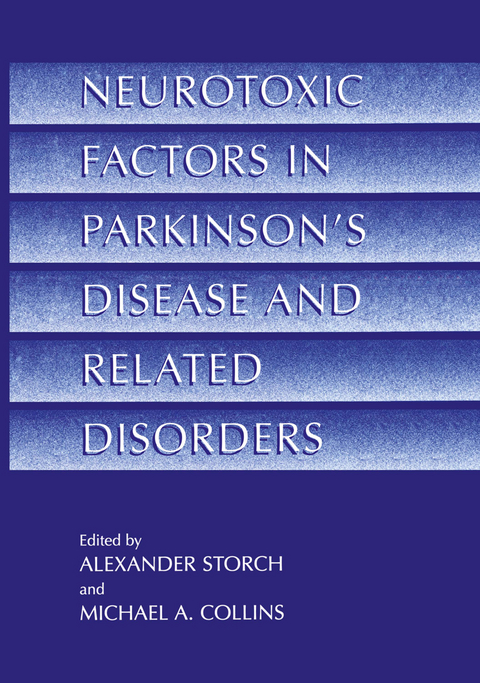
Neurotoxic Factors in Parkinson’s Disease and Related Disorders
Seiten
2012
|
Softcover reprint of the original 1st ed. 2000
Springer-Verlag New York Inc.
978-1-4613-5470-3 (ISBN)
Springer-Verlag New York Inc.
978-1-4613-5470-3 (ISBN)
nd This book stems from the 2 Parkinson's Disease Symposium on "Neurotoxic Factors in Parkinsons disease and related disorders", held on August 6-7,1999 at the University ofUlm Medical School in Ulm at the Danube, Germany. The symposium wasalso asatellite ofthejointmeetingofthe InternationalSocietyfor Neurochemistry (ISN) and the European Society for Neurochemistry (ESN) that followed immediately afterwards in Berlin. The specific topic, neurotoxic factors in Parkinson's disease (PD), was chosen in light of accumulating neurobiological and epidemiological evidence indicating that the causes of this second most common neurodegenerative disorder, and possibly of related conditions such as multiple systems atrophy, in some manner involve environ- mental (xenobiotic) and even endogenous toxic agents. This volume brings together much of that neurobiological evidence; and in epidemiology, several recent major studies ofPD - for example, a study of20,000 twins published in the Journal of the American Medical Association in 1999 - conclude that environmental and life style than genetics, appear to be critical in the idiopathic disease.
However, factors, rather the precise roles of neurotoxic factors in the pathogenesis of PD and related basal ganglia disorders remain uncertain, despite the cascade of research resulting from the discovery of the prototype MPTP in the early 1980's, and frankly, we have been surprised by the paucity of concentrated attention on specific environmental agents other than MPTP.
However, factors, rather the precise roles of neurotoxic factors in the pathogenesis of PD and related basal ganglia disorders remain uncertain, despite the cascade of research resulting from the discovery of the prototype MPTP in the early 1980's, and frankly, we have been surprised by the paucity of concentrated attention on specific environmental agents other than MPTP.
Preface. Mechanisms of Selective Vulnerability. MPTP/MPP+ Action and Mechanism. Isoquinolines as Potential Neurotoxins. beta-Carbolines as Potential Neurotoxins. Catecholamine-Oxidation Pathways in Neurotoxicity. Pesticides and Metals in Nigrostriatal Degeneration. Mechanisms of Neuroprotection. Poster Abstracts. Index. Index of Contributors.
| Zusatzinfo | XV, 340 p. |
|---|---|
| Verlagsort | New York, NY |
| Sprache | englisch |
| Maße | 178 x 254 mm |
| Themenwelt | Medizin / Pharmazie ► Medizinische Fachgebiete ► Neurologie |
| Medizin / Pharmazie ► Medizinische Fachgebiete ► Pharmakologie / Pharmakotherapie | |
| Studium ► Querschnittsbereiche ► Epidemiologie / Med. Biometrie | |
| Studium ► Querschnittsbereiche ► Prävention / Gesundheitsförderung | |
| Naturwissenschaften ► Biologie ► Zoologie | |
| ISBN-10 | 1-4613-5470-6 / 1461354706 |
| ISBN-13 | 978-1-4613-5470-3 / 9781461354703 |
| Zustand | Neuware |
| Haben Sie eine Frage zum Produkt? |
Mehr entdecken
aus dem Bereich
aus dem Bereich
ein überfälliges Gespräch zu einer Pandemie, die nicht die letzte …
Buch | Hardcover (2024)
Ullstein Buchverlage
24,99 €


